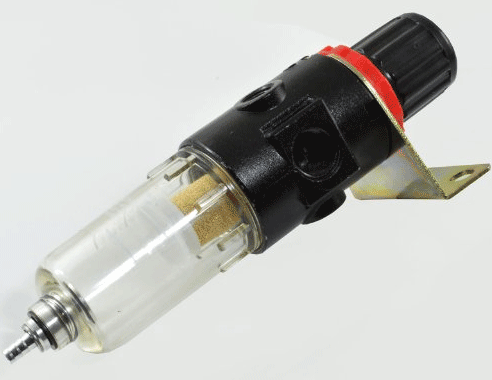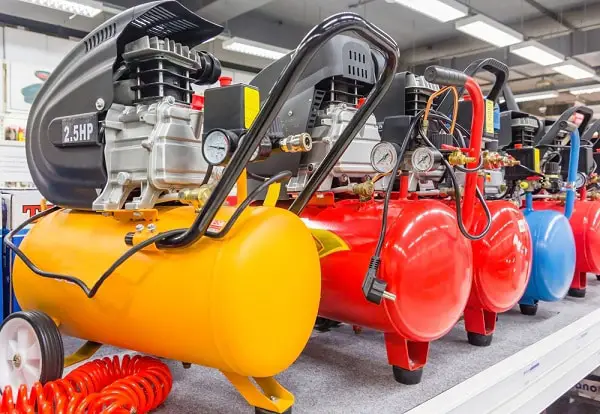In order to understand why you have too much water in my air lines, it helps to understand where the water comes from.
The air that we breathe contains a lot of moisture in vapor form.
You can’t see it, but you sure can feel it when it’s hot and very humid outside. On a really bad, high humidity day, the air can get to around 100% humidity. Simply, that air is holding all the water vapor that it can. If the humidity exceeds 100% then it’s going to rain, and it’s going to rain right now!
Now, imagine that the humidity is at 99%. The air around us is almost saturated, and if it gets just a little bit more humid, it’s going to rain.
Turn your air compressor on.
What’s the air compressor doing while it’s running? The air compressor is sucking in free air that is at 99% humidity and compressing it into your compressor tank. Yours might be similar to the Craftsman air compressor shown above. (Photo: http://www.sears.ca)
As soon as the pressure in the tank rises above zero PSI on the air gauge the humidity in the air in the tank will move past the 99% mark, and free water starts to form in the tank.
Even on a cool day, all the air the air compressor intakes has some humidity. As the compressor runs the humidity level of the air in the tank will soon exceed 100% and free water will form in the tank. Every time. This you cannot change.
If you get enough water in the tank some of it is going to blow out of the tank and into the air lines to your air tool. You know you don’t want that.
More Too Much Water In My Air Lines
There’s more sources of water in your air lines. Not only will water that’s in your tank blow into your air lines, the compressed air that is flowing out of the tank is usually warm or even hot.
Warm or hot air can hold more water vapor than can cold air. As the compressed air moves through your air hose towards your air tool, the air cools, and as it cools, the compressed air cannot hold as much water vapor, so water condenses into your hose.
Compressed Air Filter Needed
That is why it is a good idea to have a compressed air filter installed in the line from the compressor, even before the regulator, to capture free water that’s in the air stream before it gets to the regulator, to the air coupler on the air compressor, and into the air lines.
 In the photo above (photo: amazon.com) the mini-filter can be installed with a bracket as shown, or by simply hard piping the air inlet and outlet. The actual size of compressed air filter – water trap required will be determined by the air compressor size. Most small DIY type air compressors can use a filter – water trap like the one shown.
In the photo above (photo: amazon.com) the mini-filter can be installed with a bracket as shown, or by simply hard piping the air inlet and outlet. The actual size of compressed air filter – water trap required will be determined by the air compressor size. Most small DIY type air compressors can use a filter – water trap like the one shown.
Then, at the end of the air line and just before the air enters the air tool, another compressed air filter – water trap is recommended, to remove the free water that has condensed in the air line, before that water gets to the air tool.
Not quite sure how to deal with too much water in my air lines? Leave a comment below. Someone will help, for sure.


